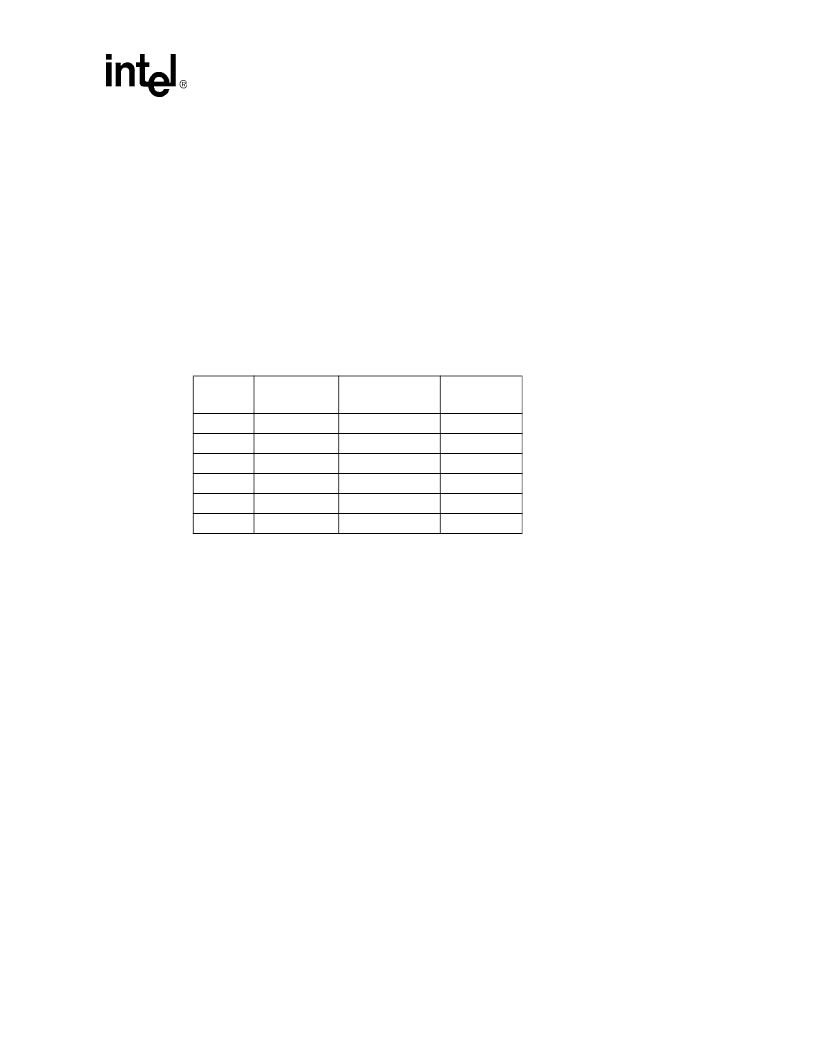- 您現(xiàn)在的位置:買賣IC網(wǎng) > PDF目錄369884 > LXP730LE Ultraframer DS3/E3/DS2/E2/DS1/E1/DS0 PDF資料下載
參數(shù)資料
| 型號: | LXP730LE |
| 元件分類: | 通信及網(wǎng)絡(luò) |
| 英文描述: | Ultraframer DS3/E3/DS2/E2/DS1/E1/DS0 |
| 中文描述: | Ultraframer DS3/E3/DS2/E2/DS1/E1/DS0 |
| 文件頁數(shù): | 19/70頁 |
| 文件大?。?/td> | 1007K |
| 代理商: | LXP730LE |
第1頁第2頁第3頁第4頁第5頁第6頁第7頁第8頁第9頁第10頁第11頁第12頁第13頁第14頁第15頁第16頁第17頁第18頁當(dāng)前第19頁第20頁第21頁第22頁第23頁第24頁第25頁第26頁第27頁第28頁第29頁第30頁第31頁第32頁第33頁第34頁第35頁第36頁第37頁第38頁第39頁第40頁第41頁第42頁第43頁第44頁第45頁第46頁第47頁第48頁第49頁第50頁第51頁第52頁第53頁第54頁第55頁第56頁第57頁第58頁第59頁第60頁第61頁第62頁第63頁第64頁第65頁第66頁第67頁第68頁第69頁第70頁

Multi-Rate DSL Framer
—
LXP730
Datasheet
19
2.8
MDSL Interface
Each LXP730 device works directly with one SK70725/21 data pump chip set. The SK70725/21
chip set must be in Mode 0 to work with the LXP730. Refer to the SK70725/21 data sheet for
details.
The LXP730 provides TDATA to the data pump and accepts QUATCLK, BITCLK and RDATA
signals from the data pump. The framer supports line data rates from 272 kbps to 1168 kbps.
Table
2
shows some of the common even-numbered transport, nominal line rates and the number of bits
per frame. Odd numbered N values may also be used.
The first value in the Bits/Frame column is the number of bits in an unstuffed frame, and the
second value is with stuffing. MDSL Frame periods are a nominal 6 ms regardless of the nominal
line rate.
The line rate is calculated as
N
x 64 kbps + 16 kbps, where
N
is the number of 64 kbps channels to
be transported. The 16 kbps is the total overhead provided by the MDSL transport system.
The 16 kbps holds true as long there is one Z bit per block as described in
“
MDSL Frame Format
”
on page 25
. The LXP730 supports up to eight Z bits per block, but when greater than one, the
overhead rate increases. This causes the line rate to increase accordingly. The equation to calculate
the DSL line rate is as follows:
Line rate (kbps) = 8[Z + 1 + (N x 8)]
The LXP730 will scramble payload data, but pass the sync word in the clear. In the Local mode, the
LXP730 uses the following scrambling polynomial:
x
-23
+ x
-5
+ 1,
In the Remote mode the scrambling polynomial is:
x
-23
+ x
-18
+ 1.
In transparent mode, the LXP730 uses the quat alignment signal (QUATCLK) from the data pump
to align the sign and magnitude bits in both the transmit and receive directions.
The overhead bits are described in
“
MDSL Overhead Definition
”
on page 23
.
Before routing the data to the descrambler, the LXP730 will invert the sign bits of the received data
stream, if the detected frame sync word has inverted sign bits.
Table 2. Common Transport & Line Rates
Data Rate
(kbps)
Nominal Line
Rate (kbps)
64 kbps Channels
(N)
Bits/Frame
256
272
4
1630/1634
384
400
6
2398/2402
512
528
8
3166/3170
640
656
10
3934/3938
768
784
12
4702/4706
1152
1168
18
7006/7010
相關(guān)PDF資料 |
PDF描述 |
|---|---|
| LXT1000 | LAN TRANSCEIVER|SINGLE|HYBRID|BGA|492PIN|PLASTIC |
| LXT19908 | Amplifier. Other |
| LXT300JE | PCM Transceiver |
| LXT300NE | PCM Transceiver |
| LXT300PE | PCM Transceiver |
相關(guān)代理商/技術(shù)參數(shù) |
參數(shù)描述 |
|---|---|
| LXP80 | 制造商:Johnson Components 功能描述: |
| LXPB2SA-50SB-Q | 制造商:SMC Corporation of America 功能描述:Actuator, electric, ball bushing |
| LXPH0000 | 制造商:Red Lion Controls 功能描述:ANNUNCIATOR LABELS, 1 LPAX LABEL: PH 制造商:Red Lion Controls 功能描述:1 LPAX LABEL PH |
| LXPHA000 | 制造商:Red Lion Controls 功能描述:ANNUN LABELS, 1 LPAX LABEL: PHASE A 制造商:Red Lion Controls 功能描述:1 LPAX LABEL PHASE A |
| LXPHB000 | 制造商:Red Lion Controls 功能描述:ANNUN LABELS, 1 LPAX LABEL: PHASE B 制造商:Red Lion Controls 功能描述:1 LPAX LABEL PHASE B |
發(fā)布緊急采購,3分鐘左右您將得到回復(fù)。